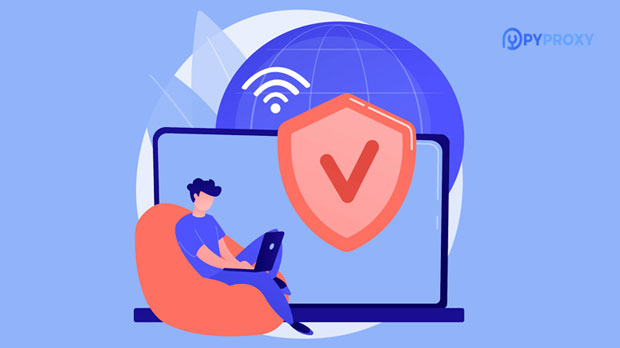The terms "proxy server" and "VPN" are commonly used in the digital world, but many people are unsure about their differences. Both are tools that help protect your online privacy and bypass geographical restrictions, but they work in distinct ways. A free proxy server primarily focuses on rerouting your internet traffic through an intermediary server to mask your IP address. On the other hand, a free VPN (Virtual Private Network) offers a broader range of security features, including encryption of internet traffic, ensuring better protection of your data. While both have their advantages, their differences make each more suited for specific use cases. 1. Basic Functionality: Proxy Server vs. VPNBoth proxy servers and VPNs are designed to improve online privacy by hiding your real IP address, making it appear as though you are browsing from a different location. However, they operate differently at a fundamental level.- Proxy Server: A proxy server works by acting as an intermediary between your device and the internet. When you connect to the internet through a proxy, your traffic is routed through the proxy server before reaching its destination. The proxy server then forwards the traffic to the target server, masking your IP address in the process. However, proxy servers generally do not encrypt your data, leaving your online activities vulnerable to monitoring.- VPN: A VPN, on the other hand, not only routes your traffic through a remote server but also encrypts the data to ensure a higher level of security. When you use a VPN, your internet connection is secured with encryption protocols, making it much harder for anyone to intercept or monitor your traffic. VPNs create a secure tunnel for your data, making them a better option for privacy and security.2. Security: Proxy Server vs. VPNOne of the most significant differences between proxy servers and VPNs lies in their security features.- Proxy Server Security: While proxy servers can hide your IP address, they generally do not offer any encryption for your internet traffic. This lack of encryption means that anyone with access to your data transmission, such as hackers or government entities, could potentially view or alter your online activities. Additionally, proxy servers can be vulnerable to DNS leaks, where your real IP address might be exposed.- VPN Security: VPNs are designed with security in mind. They encrypt all your internet traffic, ensuring that your data remains private and protected from prying eyes. This encryption adds a strong layer of security, making VPNs ideal for users who prioritize privacy, especially when using public Wi-Fi networks. Many VPN services also have advanced security features like kill switches and DNS leak protection, which further ensure your safety.3. Privacy and Anonymity: Proxy Server vs. VPNWhen it comes to maintaining privacy and anonymity online, both proxy servers and VPNs offer solutions, but with varying levels of effectiveness.- Proxy Server Privacy: While proxies can hide your IP address, they do not guarantee complete privacy. Since proxies do not encrypt your data, your online activities can still be traced back to you, especially if your internet service provider (ISP) or the website you visit monitors your traffic. In many cases, proxy services may log your activities, which can be a privacy concern if you're using a free proxy service.- VPN Privacy: VPNs provide a much higher level of privacy than proxy servers due to their encryption features. Most reputable VPN providers have strict no-logs policies, meaning they do not keep records of your online activities. As a result, VPNs are a more reliable option for users who wish to maintain anonymity while browsing the web. Additionally, VPNs make it harder for third parties, such as ISPs or hackers, to track your online behavior.4. Speed and Performance: Proxy Server vs. VPNThe speed and performance of proxy servers and VPNs can vary greatly depending on various factors, such as server load and connection quality. However, there are some general differences in how they impact your internet speed.- Proxy Server Speed: Since proxy servers do not encrypt your data, they generally provide faster speeds compared to VPNs. This makes proxies a good option for tasks where speed is crucial, such as streaming or browsing websites. However, the lack of encryption also means that your data is more vulnerable to interception.- VPN Speed: While VPNs are typically slower than proxy servers due to the encryption overhead, many premium VPN services offer optimized servers designed to maintain fast speeds. VPNs can still provide decent performance for most activities, but users may experience a slight slowdown when compared to using a proxy server.5. Use Cases: Proxy Server vs. VPNBoth proxy servers and VPNs can be useful tools for different purposes. The choice between them depends on your specific needs.- Proxy Server Use Cases: Proxy servers are commonly used for bypassing geo-restrictions and accessing content that might be blocked in certain regions. They are also useful for basic tasks like browsing the web and watching videos online, where encryption is not a priority. For users who want a quick and simple solution for accessing content in another location, a free proxy can be a suitable option.- VPN Use Cases: VPNs are ideal for users who prioritize security and privacy. They are particularly useful for secure browsing, protecting sensitive data, and bypassing restrictions when accessing public Wi-Fi networks. VPNs are also essential for users who want to safeguard their online identity and remain anonymous while using the internet.6. Free Proxy Server vs. Free VPN: Which One is Better?Both free proxy servers and free VPNs are available, but they come with certain limitations that users should be aware of.- Free Proxy Server: While free proxy servers may seem like a cost-effective option, they often come with a range of drawbacks. Free proxies may have slower speeds, more frequent downtime, and less reliable connections. Additionally, free proxy services may log your online activities or sell your data to third parties, compromising your privacy.- Free VPN: Free VPN services may also be tempting, but they come with similar risks. Many free VPNs limit your data usage, offer fewer server locations, and may compromise your speed. Some free VPNs might also track your online behavior and inject ads into your browsing experience. For the best privacy and security, it’s often better to invest in a paid VPN service.ConclusionIn summary, both proxy servers and VPNs serve similar purposes but differ significantly in their functionality, security, privacy, speed, and use cases. Proxy servers are suitable for users who only need to hide their IP address and bypass geo-restrictions, but they lack encryption and other security features. VPNs, on the other hand, offer comprehensive privacy and security by encrypting data and providing a secure internet connection. While free versions of both options exist, they come with limitations that can compromise your online experience and privacy. Ultimately, your choice between a proxy server and a VPN depends on your specific needs, with VPNs being the more reliable option for those seeking a secure and private online experience.
Aug 06, 2025



































































